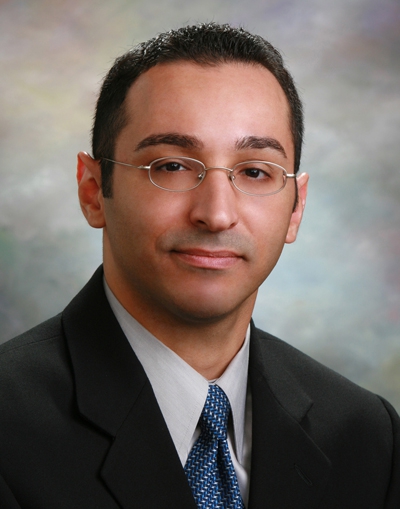Editor: Would each of you describe your IP-specialized practices for our readers?
Toma: My legal area of practice is in patent prosecution and opinion work. I provide counsel on the patentability of subject matter in various technological disciplines, including invalidity and non-infringement issues.
Kesslen: I chair the Intellectual Property Group and co-chair the IP Litigation Group. I provide strategic guidance to technology-based businesses in patent strategy (licensing, litigation, and prosecution) including venture-backed companies in digital and social media, software, clean-tech, medical devices and the fintech space.
Editor: Are technology investments a very popular investment vehicle?
Kesslen: Today, the venture capital market is very hot. In fact, after Silicon Valley, New York is now the most active venture capital community, having surpassed Boston over the last six months.
Editor: Please describe the substantive changes to prior law contained in the new patent law bill (America Invents Act of 2011) recently passed by the Senate and expected to be approved by the House.
Toma: One of the most substantive changes in the bill would be the transition from a first-to-invent to a first-to-file system. In short, an inventor first to file an application in the USPTO would secure priority over the subject matter sought for patent. The change would eliminate the need for interference proceedings, making questions regarding the date of conception, diligence and reduction to practice moot.
The bill also proposes substantive changes in challenging patent rights, for example, expanding the law with respect to third-party pre-issuance submissions and post-grant review.
Editor: How does the Act change the way interference proceedings are conducted?
Kesslen: Once the first-to-file system is implemented, the interference proceeding - which determines who was first to invent - will be phased out because it will no longer be relevant.
Toma: That said, there is an exception to the first-to-file system. In the new system, the only avenue of challenge for an earlier inventor who is not the "first-to-file" inventor is through a process called a derivation proceeding. In a derivation proceeding, the earlier inventor may allege that the applicant who was awarded priority (because he or she was the first to file) derived the invention from the earlier inventor's work. If proven, the earlier inventor could then be awarded priority. If passed into law, regulations would be prescribed setting forth standards for conducting the proceedings.
Editor: Please explain the new system of challenging patent applications known as the "post-grant review."
Kesslen: This review is akin to the opposition proceeding in Europe where for a limited period of time after the issuance of the patent, a third party can challenge the validity of the patent. In the current Senate version of the bill, this period is nine months, while in the House version it is one year. If the bill is passed, the USPTO will have a certain period of time for the rule-setting process.
Toma: In a post-grant review, a third party is afforded an opportunity to challenge the validity of a patent on any ground. The review is similar to the existing reexamination procedure, except that in reexamination the scope is limited to challenges of novelty and obviousness (35 U.S.C.§§102 and103). In addition, a substantial new question of patentability must be raised in reexamination, whereas in post-grant review, issues previously considered by the examiner may be reconsidered. The burden of proof for granting a petition for post-grant review merely requires that a challenger show that it is more likely than not that at least one claim in the patent is unpatentable.
Kesslen: There is an important debate about how adding this post-grant review process will affect small inventors as well as the patent community at large. While this debate is theoretical at this time, it could be a potential problem in the pharmaceutical industry, which relies more on the "one product, one patent" thesis, where there are many challenges to patentability. On the other hand, in the non-life-science industries, it is our view that it will remain only a theoretical problem. There, the small inventor community believes large corporations will use post-grant review to hurt them, but we doubt that will occur. Few large companies today are willing to invest the time, money and resources to track small inventors' patents on a weekly basis solely to hurt small inventors by challenging their patents for no reason. Said differently, we don't envision "random acts of post-grant review." We think the more likely scenario for post-grant review will be between parties that have been working together or have some relationship and that relationship failed.
Editor: Does this first-to-file system favor large companies?
Kesslen: My experience has been that most large technology companies are in favor of the first-to-file proposal. Large companies have the resources to have a disciplined process and a patent team on staff to manage their patent portfolios and handle filings. The challenge is greater for early-stage companies and small inventors, who don't have those advantages. As a result of these changes, we are likely to see early-stage companies and small inventors filing more provisional patent applications, but at minimum cost and with some risk. The rush to file quickly to secure priority will occur at the sacrifice of an adequate written disclosure typically born of the testing and research that goes into development of new ideas.
Editor: Will the first-to-file system affect the way patent searches are done?
Toma: We don't expect there to be a noticeable effect on how patent searches are conducted. At the end of the day, the filing date of an application is going to dictate whether or not a publication pertaining to the subject matter sought for patent qualifies as prior art.
Editor: Will the "race to file" divert funds from extended testing of new products owing to the need for firms to file more applications during earlier development stages?
Toma: The race to file an application in the USPTO will undoubtedly have some adverse effect on how funds are allocated for research, early-stage development and testing. There will certainly be an increased pressure on starting the patenting process earlier.
Editor: Why does the first-to-file system require that companies have a systematic patent program and strategy in place?
Toma: In order to beat out competitors practicing in the same technological space companies will have no choice but to employ more aggressive patent application filing strategies to meet the increased timing demands inherent in a first-to-file system. Such strategies are likely to increase the burden on company employees (inventors) to provide better disclosures faster and earlier in development.
Today, substantial time and effort is invested in research and development of a patentable product or process, particularly in the life sciences space. Those efforts usually translate into a detailed invention disclosure, which is needed by patent counsel to describe an invention with adequate support for enabling the subject matter sought for patent. With a first-to-file structure, the ability to provide the same level of disclosure may be jeopardized, which in turn may lead to premature filings being prepared simply to beat out competitors in the race to file their application first. As such, there may be a noticeable bump in the number of filings in the USPTO to ensure that a company's patentable product or process is adequately captured and protected.
Editor: Should the lawyers be involved in that process?
Kesslen: Absolutely. Counsel should work to develop a process that enables a company's inventors, engineers and designers - the creators of IP - to bring their inventions to the attention of the company's legal department more efficiently so that their applications can get filed in a much quicker and more efficient manner.
Editor: Is there a downside to the first-to-file system?
Toma: A clear downside for all inventors, whether it be a solo inventor working out of his garage or a well established multinational company, is the filing of premature applications owing to the rush to file first to secure priority.
Editor: Why has the USPTO's proposed prioritized patent examination process entailing a higher filing fee, which would have speeded up patent approvals, scheduled to become effective in May, now been tabled?
Toma: In late April, Director Kappos announced that the proposed prioritized examination process has been postponed indefinitely due to budget cuts.
Kesslen: The Patent Office is budgeted a certain amount of funding by the federal government, and every dollar received over that amount is transferred to the general surplus of the federal government. Therefore, an increased filing fee amounts to a filing fee plus a tax, which goes to the U.S. Treasury.
Editor: Does the new proposal change that?
Kesslen: The new proposal seeks to allow the Patent Office to keep all of its collected filing fees. This is unlikely, because the federal government is having enough challenges on the revenue side. As a result, the patent community and innovation will suffer.
However, if the USPTO is allowed to keep funding, it would be of tremendous value and allow it to address the backlog of unexamined patent applications, the current average pendency in the Patent Office being over three years. At our firm, we do a lot of work for software-driven businesses - from social media companies to financial services firms - for whom the pendency of patent applications is in excess of five years. If the USPTO is able to do the kind of hiring that David Kappos, the director of the Patent Office, has suggested, it would likely meet his goal of bringing the average pendency closer to two years. Under that scenario, the U.S. would become even stronger and more competitive from a perspective of innovation. Increased funding would also enable the Patent Office to implement other programs, such as the prioritized patent examination process.
Editor: What other new developments in patent law should be brought to the attention of our readers?
Kesslen: There is an important case pending before the Court of Appeals for the Federal Circuit relating to Akamai Technologies v. Limelight Networks. The court is reconsidering the test used to determine if separate parties should be jointly liable for activities that allegedly infringe method patents. The case impacts a number of areas of technology. While a patent attorney can draft claims to avoid this issue, we continue to review patent claims that raise joint infringement issues, which has led to a lot of uncertainty as to the enforcement and validity of a class of patents.
Published May 31, 2011.



